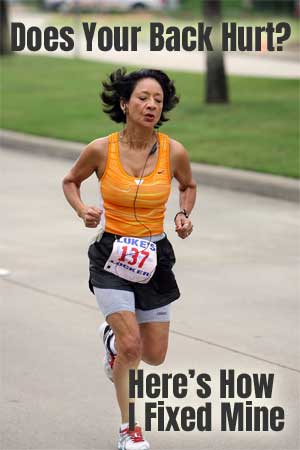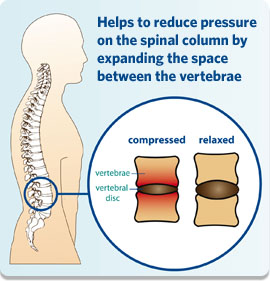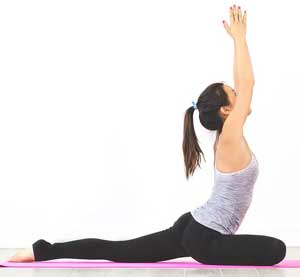Do you run and have back pain? You are not alone. I myself experienced debilitating lower back pain from running, and I’ll share with you how I fixed it.

I Started Getting Back Pain After Running. Here’s My Story…
I never really ran growing up. However, as an adult I started to take up running as a regular form of exercise. Over time, it got easier and easier to go longer distances and I came to really enjoy running in the outdoors and on trails near my home.
Then, over time, I started to develop lower back pain. I switched up my running shoes, worked on my form and stayed clear of concrete and asphalt surfaces.
I can’t pinpoint the exact cause, but it would make sense that the cause would be the repetitive running movement. For example, where I “pounded the pavement” – even if I ran on a dirt trail.
How I Began Relieving My Back Pain
Although making changes and taking precautions has helped me in the pain department, I still have to make sure that I consistently stretch my legs, calves, hips and back on a daily basis. Since I have started daily stretching and strengthening exercises, I’ve also found that my posture is better and that I experience less aches and pains overall… go figure!

I discovered that using an inversion table helped too. I find that if I use it for 5-10 minutes after a long run, it works wonders on my lower back pain. Even if I’m not running, I make sure to hang upside down for short periods because honestly, it just feels good.
I imagine that gravity combined with the repetitive “pavement pounding” give my spinal cord a good reason to compact itself, compress the nerves running through it and send me shooting pains down my sciatic nerve every once in a while.
Although this is simply my opinion and not my medical expertise, I figured I’d include some resources that helped me arrive at this conclusion, in the case that someone else might be experiencing the same or similar symptoms and might find these medical resources helpful.
Of course, we can find many causes of lower back pain, and runners should check with their doctors before trying any sort of treatment. If you can figure out what causes your pain, then you can treat it much more easily.
1. Running Puts Stress on Your Spinal Discs
On Spine-Health.com, they explain that discs absorb “shock” in the lower back. Running/jogging puts additional stress on discs because of the repetitive impact. Runners with issues like a herniated disc or degenerative disc disease are likely to experience more pain and need to be careful about running.
When inverted, I can stretch out the discs that I have compacted, providing surprisingly quick relief (in my case).
2. Strengthening Core Muscles Can Reduce Back Pain
According to WalkJogRun.net, most runners will experience lower back pain. In fact, this pain is the most common injury treated in physical therapy. Although there are various reasons for the cause, something I see repeatedly come up is “weak core muscles” and “tight hips”.
When researching inversion tables and their benefits and risks, I saw that you could do core strengthening exercises right on the bench. Even you stretched out your spine. This made a lot of sense.
3. Move to Maintain Back Flexibility
WebMD states that even though rest works well in treating lower back pain, our bodies (and spines) were designed to move. Rather than resting and not moving, we should incorporate gentle stretching and strengthening routines. For example, try yoga. Plus, we can set up a “posture-enhancing” workstation so that we can prevent future problems.
I noticed this myself. I actually felt better when I was moving and exercising more than when I would take the day off working out and be sitting at a desk all day. This will probably make sense to you if you experience lower back pain after running. To keep me strong and flexible during my workouts, I have found that stretching at home, physical therapy, monthly massages and inversion therapy really help.
4. Hip Opening Stretches Can Sometimes Help Back Pain
 RunnerUnleashed.com talks about how discs in the lower back can compress on nerve roots, causing sciatic nerve pain which can run down the back of the leg. Doing stretches (like half pigeon) to open up the hips and using a foam roller to help relax a tight piriformis are simple techniques that runners could do as home treatment remedies.
RunnerUnleashed.com talks about how discs in the lower back can compress on nerve roots, causing sciatic nerve pain which can run down the back of the leg. Doing stretches (like half pigeon) to open up the hips and using a foam roller to help relax a tight piriformis are simple techniques that runners could do as home treatment remedies.
I can attest that these exercises greatly helped me. However, I need to consistently keep up with my stretches. I find that if I stop stretching for a week or two (especially if I continue running…) that my hips will get tight again and I’ll start feeling more pain. I will meditate, read or listen to a radio show during my stretching and hip openers, and this makes it easy to stick to a routine.
5. Stretching the Spine Allows Fluid to Re-Enter the Discs
As an except on BarefootRunners.org quotes, “As you relax, your spine begins to stretch.” When the back is stretched out, fluid can move back into the disc. This is why inversion has helped so many people with lower back pain.
The following video by the Healthy Back Institute provides a good visual explanation of how this process works. We can really see the effect of lower back pain from running.
